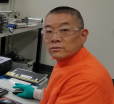Researchers uncover how pathogens hijack phosphate pathways to infect crops
A team of scientists from The Australian National University (ANU) has discovered how a powerful “weapon” used by many fungal pathogens enables them to cause disease in major food crops such as rice and corn









